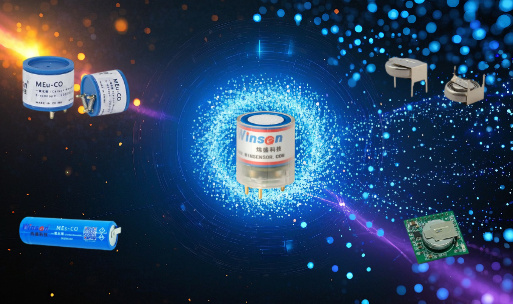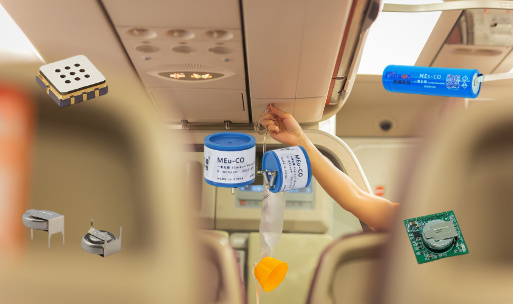Gas Sensors in the Brazilian Mining Industry: Ensuring Safety with ZE03 Series Technology
Mining is one of Brazil’s most important industries, contributing significantly to the country’s GDP and exports. From iron ore and gold to bauxite and nickel, Brazil’s mineral wealth fuels both domestic industry and international trade. However, mining also presents serious safety hazards, especially from the release of harmful gases during extraction, processing, and transportation.
To safeguard workers and ensure operational efficiency, gas detection and monitoring systems are essential — and at the heart of these systems are high-precision gas sensors.
This article explores:
- The harmful gases common in Brazil’s mining industry
- Why monitoring methane (CH₄), carbon monoxide (CO), hydrogen sulfide (H₂S), and oxygen (O₂) is critical
- How ZE03 series electrochemical gas sensors deliver reliable performance in demanding mining conditions
- Applications and benefits of gas sensors in Brazilian mines
- Technical specifications, compliance standards, and real-world use cases
Overview of Harmful Gases in Mining
Mining operations in Brazil often involve drilling, blasting, excavation, and ore processing. These processes can release dangerous gases from underground pockets, machinery exhaust, or chemical reactions.
| Gas | Source in Mining | Hazards | Detection Technology |
|---|---|---|---|
| Methane (CH₄) | Coal seams, decomposed organic material | Explosive at concentrations >5%, asphyxiant | NDIR methane sensors (e.g., MH-441D) |
| Carbon Monoxide (CO) | Diesel engines, incomplete combustion of fuels, explosives | Toxic at low ppm, binds to hemoglobin | Electrochemical CO sensors (e.g., ZE03-CO) |
| Hydrogen Sulfide (H₂S) | Sulfide ores, anaerobic bacterial decay | Highly toxic, corrosive, causes respiratory paralysis | Electrochemical H₂S sensors (e.g., ZE03-H2S) |
| Oxygen (O₂) | Natural depletion in confined spaces, displacement by other gases | Hypoxia risk, impairs decision-making, can be fatal | Electrochemical O₂ sensors (e.g., ZE03-O2) |
Mining Safety Challenges in Brazil
1. Complex Geology and Underground Gas Pockets
Brazil’s mining regions — Minas Gerais, Pará, Goiás — often feature deep seams and fractured rock formations. These geological conditions can trap methane and hydrogen sulfide, releasing them unpredictably during excavation.
2. Heavy Use of Diesel Machinery
Most underground mines rely on diesel-powered haul trucks, loaders, and drills. This results in elevated CO levels, which require constant monitoring.
3. Limited Natural Ventilation
Many Brazilian mines, especially in older shafts, have limited ventilation systems. Without effective gas monitoring, harmful gas buildup can occur rapidly.
Methane Monitoring in Brazilian Mining
Why Methane is Dangerous
Methane (CH₄) is a colorless, odorless, highly flammable gas. In coal mines, it is a primary explosion risk. Even at low concentrations, it can displace oxygen and cause asphyxiation.
Explosion Risk Levels:
| Concentration (%) | Risk Level |
|---|---|
| 0–1% | Minimal risk, but monitor continuously |
| 1–5% | Flammable range starts |
| 5–15% | Maximum explosion hazard |
| >15% | Too rich to burn, but oxygen depletion hazard |
MH-441D NDIR Infrared Methane CH4 Sensor Advantages
- High sensitivity, high resolution, fast response
- Output method: UART, analog voltage signal
- Temperature compensation, excellent linear output
- Excellent stability, Long lifespan
- Anti-poisons, anti-vapor interference
- Can replace catalytic type gas sensor directly
Carbon Monoxide Detection in Brazilian Mines
CO is one of the most common toxic gases in both underground and open-pit mining. Sources include blasting, smelting, and diesel exhaust.
Health Effects of CO Exposure:
| CO Concentration (ppm) | Symptoms |
|---|---|
| 35 | OSHA permissible exposure limit (PEL) |
| 200 | Headache, dizziness after 2–3 hours |
| 800 | Dizziness, nausea after 45 minutes |
| >1600 | Fatal within 1–2 hours |
ZE03-CO Sensor Features:
- Electrochemical sensing for low cross-sensitivity
- High resolution (1 ppm)
- Long service life (>2 years in mining environments)
- Compact module for portable detectors
Hydrogen Sulfide in Mining Operations
Hydrogen sulfide (H₂S) is released when sulfide minerals are exposed to moisture and bacteria. It smells like rotten eggs at low concentrations but deadens the sense of smell at higher levels, making it especially dangerous.
Exposure Risks:
| H₂S Concentration (ppm) | Health Impact |
|---|---|
| 10 | Eye and throat irritation |
| 100 | Loss of smell after a few minutes |
| 300 | Respiratory paralysis, possible death |
| >500 | Immediate collapse, fatal |
ZE03-H2S Sensor Benefits:
- Electrochemical cell for accurate low-ppm detection
- Waterproof and dustproof housing options
- Minimal interference from other gases in mining environments
Oxygen Monitoring: Preventing Hypoxia
In confined mining spaces, oxygen can drop due to:
- Displacement by gases like CO₂, CH₄, N₂
- Consumption during combustion or blasting
- Absorption by reactive ores
Oxygen Safety Levels:
| O₂ Concentration (%) | Risk Level |
|---|---|
| 21% | Normal |
| 19.5% | OSHA minimum safe limit |
| 16% | Impaired judgment, dizziness |
| <10% | Risk of unconsciousness and death |
ZE03-O2 Sensor Highlights:
- Stable electrochemical detection
- Compact design for portable or fixed systems
- Built-in temperature compensation
The ZE03 Series: Tailored for Brazilian Mining Needs
| Model | Target Gas | Detection Range | Output | Technology |
|---|---|---|---|---|
| ZE03-CO | Carbon Monoxide | 0–1000 ppm | UART/Analog | Electrochemical |
| ZE03-H2S | Hydrogen Sulfide | 0–100 ppm | UART/Analog | Electrochemical |
| ZE03-O2 | Oxygen | 0–25% vol | UART/Analog | Electrochemical |
Key Advantages in Brazilian Mining:
- Designed for high humidity and dust environments
- Wide temperature tolerance (-20°C to +50°C)
- Easy integration with ventilation control systems
- Low maintenance requirements
Real-World Application: Gold and Iron Ore Mines in Minas Gerais
In Minas Gerais, where deep underground mining is common, operators deploy multi-gas monitoring systems using ZE03 modules. These systems:
- Provide continuous CH₄, CO, H₂S, and O₂ readings
- Trigger alarms when thresholds are exceeded
- Interface with automated ventilation systems to reduce gas concentrations
Compliance and Safety Standards in Brazil
Brazil’s mining safety regulations are overseen by:
- Ministério do Trabalho e Emprego (MTE)
- Norma Regulamentadora NR-22 (Safety in Mining Operations)
Gas monitoring systems using ZE03 sensors can help operators comply with:
- NR-22 requirements for continuous gas monitoring
- International standards such as ISO 10849 and IECEx for explosion safety
Conclusion
Brazil’s mining industry is vital to its economy, but it faces constant safety challenges from hazardous gases. By integrating ZE03 series gas sensors into portable detectors, fixed monitors, and ventilation control systems, operators can:
- Protect workers’ health
- Prevent catastrophic explosions
- Ensure compliance with Brazilian and international safety standards

| Target: | CO,O2,NH3,H2S,NO2,O3,SO2, CL2,HF,H2,PH3,HCL, etc. |
| Model: | ZE03 |
| Detection range: | See manual |
| Detection principle: | Module, electrochemical |
| Characteristics: | Supply UART output and analog voltage output; Use for portable and fixed gas detector, various gas detection equipment and occasion. |
| Size: | ø23.5mm*24.5mm |
| Working conditions: | See manual |
ZE03 Manual download
Get Price Whatsapp
With robust performance, long life, and easy integration, the ZE03 series is an ideal choice for Brazil’s demanding mining environments.





